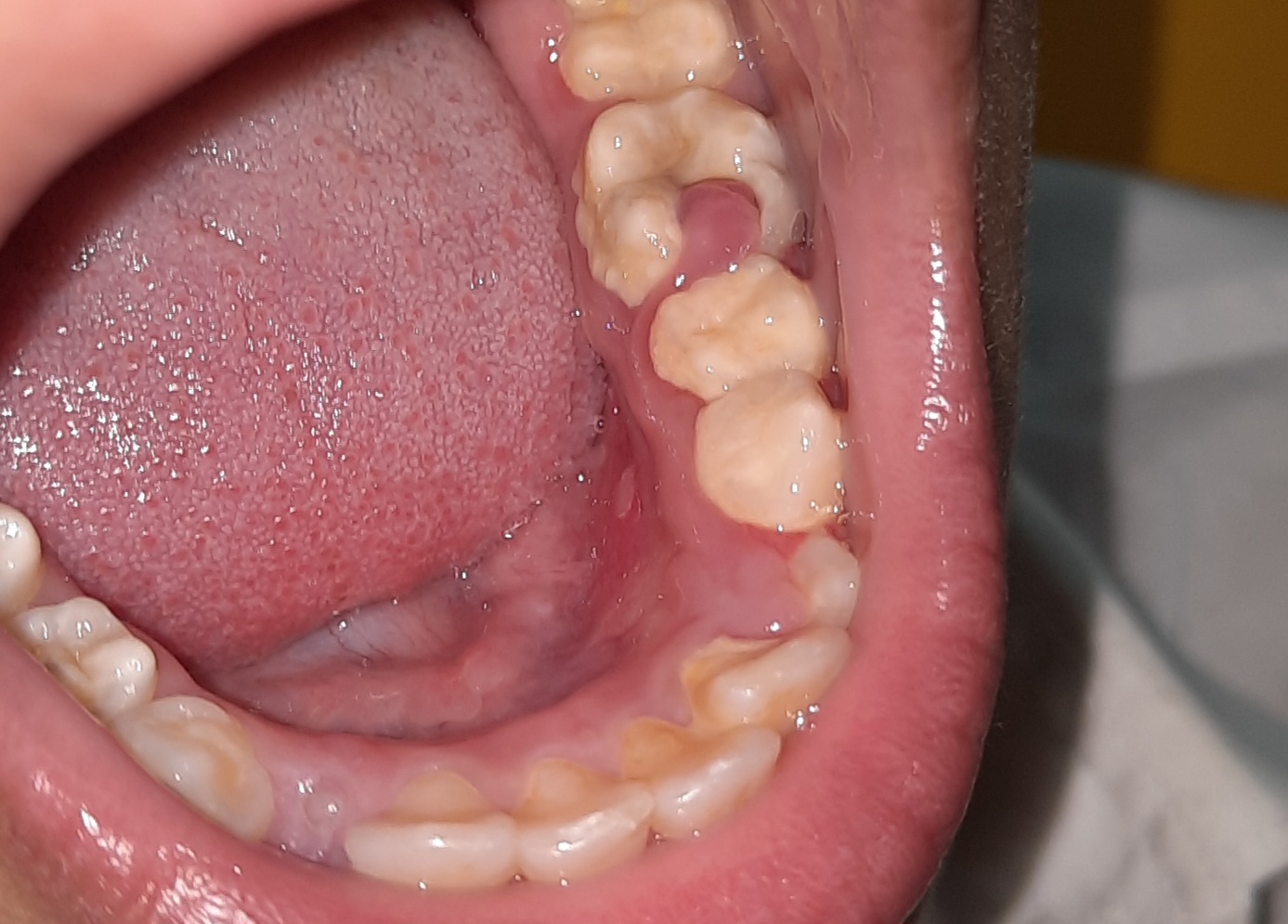Pulp polyps, also known as chronic hyperplastic pulpitis, represent a condition that often raises concerns among both dental students and patients. This guide will explore the various aspects of pulp polyps, providing detailed information suitable for both learning and practical application.
Table of Contents
Introduction to Pulp Polyps in Dentistry
Pulp polyps, medically referred to as chronic hyperplastic pulpitis, occur when the dental pulp tissue becomes inflamed and expands. This condition typically develops in response to a long-standing infection or severe decay in a tooth. The pulp, being rich in blood vessels and nerves, reacts by producing an excessive amount of tissue that protrudes from the cavity.
Dental students must understand the clinical manifestations, causes, and treatment options available for managing pulp polyps. Meanwhile, patients should recognize the symptoms and know when to seek professional help to prevent complications.
Causes and Risk Factors of Pulp Polyps
Causes
Chronic hyperplastic pulpitis arises when the pulp tissue, under continuous irritation or infection, grows abnormally. Common causes include:
- Severe Tooth Decay: Deep cavities expose the pulp, leading to irritation and inflammation.
- Fractured Teeth: A broken tooth can expose the pulp, allowing bacteria to infiltrate and cause inflammation.
- Untreated Cavities: Long-standing, untreated cavities can evolve into pulp polyps, especially if the tooth’s protective layers are compromised.
Risk Factors
Certain factors increase the likelihood of developing pulp polyps:
- Young Age: Children and young adults are more susceptible due to a larger pulp chamber.
- Poor Oral Hygiene: Neglecting oral care can lead to severe decay, a precursor to pulp polyps.
- Compromised Immune System: Patients with weakened immune systems may experience more aggressive infections, increasing the risk.
Symptoms of Pulp Polyps in Dentistry
Clinical Manifestations
Pulp polyps are generally asymptomatic, meaning patients may not experience pain. However, certain signs and symptoms can indicate their presence:
- Visible Tissue Growth: The most obvious sign is a reddish or pinkish mass emerging from the cavity of a decayed tooth.
- Mild Discomfort: Although pain is not typical, some patients may experience mild discomfort, especially when chewing.
- Bleeding: The overgrown pulp tissue may bleed easily, particularly during brushing or eating hard foods.
Differential Diagnosis
Dental professionals must differentiate pulp polyps from other oral conditions, such as:
- Granulomas: These are inflammatory lesions that resemble pulp polyps but have different etiologies.
- Fibromas: Benign growths in the mouth that can appear similar but are not related to the dental pulp.
Diagnosis of Chronic Hyperplastic Pulpitis
Clinical Examination
Diagnosing pulp polyps primarily involves a thorough clinical examination. Dentists will:
- Inspect the Affected Tooth: The visible growth of pulp tissue is often a clear indicator.
- Evaluate Symptoms: Although pain is uncommon, the presence of discomfort or bleeding may be noted.
- Use Diagnostic Tools: X-rays can help assess the extent of decay and the condition of the surrounding bone structure.
Radiographic Assessment
Radiographs play a crucial role in confirming the diagnosis of pulp polyps. Dentists may use:
- Periapical X-rays: To assess the tooth’s root and surrounding bone for any additional pathology.
- Bitewing X-rays: To evaluate the extent of decay and to ensure that no other teeth are affected.
Treatment Options for Pulp Polyps in Dentistry
Conservative Approaches
In cases where the tooth can be saved, dentists may opt for conservative treatments, such as:
- Pulpotomy: Removing the inflamed pulp tissue while preserving the remaining healthy tissue. This approach is often used in children to maintain the tooth’s structure until it naturally falls out.
- Root Canal Therapy: A more definitive treatment where the entire pulp tissue is removed, and the tooth is sealed to prevent further infection.
Tooth Extraction
If the tooth is severely decayed or the structure is compromised, extraction may be necessary. This option is considered when:
- The Tooth Cannot Be Restored: Severe decay or damage may make restoration impossible.
- Risk of Infection: Leaving the pulp polyp untreated could lead to more serious infections, such as abscesses.
Post-Treatment Care
After treatment, patients should follow specific guidelines to ensure proper healing:
- Maintain Oral Hygiene: Brushing and flossing regularly will help prevent future decay.
- Regular Dental Check-Ups: Monitoring the treated area for any signs of complications is essential.
- Avoid Hard Foods: Especially immediately after treatment, to allow the area to heal without additional stress.
Prevention of Pulp Polyps
Good Oral Hygiene Practices
Preventing pulp polyps primarily involves maintaining excellent oral hygiene:
- Regular Brushing: Twice daily with fluoride toothpaste to prevent decay.
- Flossing: Daily to remove plaque from areas a toothbrush can’t reach.
- Mouthwash: Using an antimicrobial mouthwash can reduce bacteria in the mouth.
Routine Dental Visits
Regular check-ups with a dentist are crucial in preventing conditions that can lead to pulp polyps. During these visits:
- Professional Cleanings: Help remove plaque and tartar that cannot be removed by regular brushing.
- Early Detection: Dentists can identify and treat cavities before they progress to pulp polyps.
Complications Associated with Untreated Pulp Polyps
Potential Risks
Leaving pulp polyps untreated can lead to various complications, including:
- Infection Spread: The infection can extend to surrounding tissues, leading to abscess formation.
- Tooth Loss: Advanced decay may eventually result in the loss of the affected tooth.
- Jawbone Deterioration: Severe infections can affect the bone structure, leading to more complex dental issues.
Systemic Implications
In rare cases, untreated pulp polyps can contribute to systemic health problems. The chronic inflammation and infection associated with pulp polyps might:
- Weaken the Immune System: Constant infection can strain the body’s immune response.
- Increase Risk of Other Diseases: Oral infections have been linked to conditions such as endocarditis and respiratory infections.
Managing Pulp Polyps: Clinical Guidelines
For Dental Students
Dental students must learn the proper management of pulp polyps, including:
- Diagnostic Skills: Identifying pulp polyps during clinical examinations and using radiographs effectively.
- Treatment Planning: Deciding between conservative treatments and extractions based on the tooth’s condition.
- Patient Education: Informing patients about the importance of oral hygiene and routine dental care to prevent future occurrences.
For Patients
Patients should be aware of how to manage their oral health if diagnosed with a pulp polyp:
- Adhere to Treatment Plans: Follow the dentist’s recommendations carefully to prevent complications.
- Monitor for Symptoms: Even after treatment, watch for signs of infection or discomfort.
- Engage in Preventive Care: Regular brushing, flossing, and dental visits are crucial in preventing recurrence.
Frequently Asked Questions
Are pulp polyps painful?
Pulp polyps are not usually painful, as they are just fibrous overgrowths. However, when direct masticatory pressure is applied on them, they may eventually become tender and can even cause inflammation leading to continuous pain.
Are pulp polyps cancerous?
No, pulp polyps are not cancerous. Pulp polyps, or chronic hyperplastic pulpitis, are benign growths of inflamed dental pulp tissue.
Unlike cancer, which involves uncontrolled and malignant cell growth that can spread to other parts of the body, pulp polyps are localized, non-malignant tissue overgrowths. They are generally asymptomatic and do not pose a risk of developing into cancer. However, if left untreated, they can lead to further complications, such as infections or the loss of the affected tooth.
Conclusion: When to See the Dentist
Understanding pulp polyps and their implications is vital for both dental students and patients. For patients, recognizing the symptoms and seeking timely treatment can prevent further complications.
If you notice any unusual growths, discomfort, or bleeding in your mouth, it’s essential to see a dentist promptly. Early intervention can save the affected tooth and prevent more severe health issues. Regular dental check-ups, good oral hygiene practices, and adhering to treatment plans are key to maintaining oral health and preventing pulp polyps from developing.
You can now book an online video consultation with us to know more about your problem. BOOK NOW!




